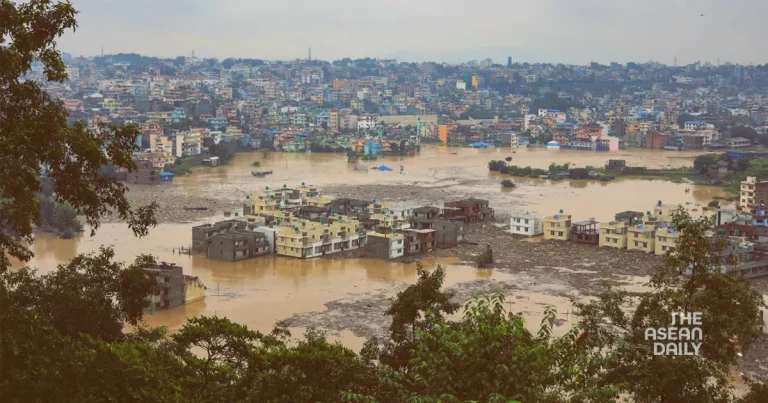29-9-2024 (KATHMANDU) Nepal has been plunged into crisis as torrential rains have triggered catastrophic floods and landslides across the country, claiming at least 100 lives and leaving 67 individuals missing. The disaster has prompted authorities to close schools for three days as the nation grapples with the aftermath of the deluge.
The capital, Kathmandu, and its surrounding valley, home to approximately 4 million residents, bore the brunt of the calamity with 37 fatalities reported in the region. The unprecedented rainfall has brought normal life to a standstill, disrupting traffic and essential services.
Lakshmi Bhattarai, a spokesperson for the education ministry, told Reuters, “We have urged the concerned authorities to close schools in the affected areas for three days.” The decision comes as many educational institutions have suffered significant damage, posing risks to students and staff.
Meteorological data reveals that some areas of Kathmandu recorded rainfall of up to 322.2mm, causing the main Bagmati River to swell 2.2 metres above the danger mark. While Sunday morning brought some respite with easing rains in many places, weather forecaster Govinda Jha cautioned that isolated showers might still occur.
The extreme weather event has been attributed to a low-pressure system in the Bay of Bengal, extending over parts of neighbouring India. However, climate scientists at the International Centre for Integrated Mountain Development (ICIMOD) argue that haphazard development has amplified the risks associated with climate change in Nepal.
????????????Tragedy has struck Nepal as heavy rains unleash devastating floods and #landslides across the country.
???? #Kathmandu | #Nepal
Key Facts:
– At least 66 people confirmed dead
– 79 individuals reported missing
– Disaster unfolded over the past 24 hours
– Heavy rains triggered… pic.twitter.com/ATDnJl1srI— Weather monitor (@Weathermonitors) September 28, 2024
Arun Bhakta Shrestha, an environmental risk official at ICIMOD, remarked, “I’ve never before seen flooding on this scale in Kathmandu.” The organisation has called for urgent government action to improve infrastructure, including underground stormwater and sewage systems, both engineered and nature-based.
The disaster’s impact was exacerbated by poor urban planning, with uncontrolled settlement on floodplains and encroachment on the Bagmati River contributing to the severity of the flooding.
In a tragic turn of events, six players from the Nepali Football Association’s (ANFA) academy in Makwanpur district lost their lives in a landslide while attempting to move to a safer location. The ANFA expressed deep condolences to the bereaved families.
As the nation mourns, authorities report that since the onset of the monsoon season in mid-June, at least 254 people have perished and 65 remain missing due to landslides, floods, and lightning strikes.




